점점 더 많은 사람들이 전 세계의 거리를 밝히는 지속 가능하고 비용 효율적인 방법으로 태양광 발전에 의존하고 있습니다. 태양광 가로등은 전기 그리드에서 끌어오는 대신 광전지 에너지에 의존하는 효과적인 솔루션입니다. 그러나 이러한 시스템은 실제로 얼마나 많은 전력을 소비합니까? 구매자는 어떤 유형의 성능을 기대할 수 있습니까?
이 유익한 블로그 게시물은 태양열 가로등 전력 소비 및 성능 기대치를 둘러싼 필수 세부 정보에 대해 자세히 설명합니다. 이 성장하는 기술을 더 자세히 살펴보려면 계속 읽으십시오!
태양광 가로등의 구성 요소
-
태양 전지 패널: 태양광 패널은 햇빛을 전기로 변환하는 역할을 합니다. 일반적으로 단결정 또는 다결정 실리콘 셀로 만들어집니다. 패널은 기둥 상단 또는 별도의 마운팅 구조에 장착되어 태양을 향하여 에너지 흡수를 극대화합니다.
-
LED 라이트 : LED(Light Emitting Diode) 램프는 밝고 일관된 조명을 제공하는 에너지 효율적인 광원입니다. LED 조명은 백열등이나 CFL 전구와 같은 기존 램프에 비해 수명이 길고 전력 소비가 적습니다.
-
배터리 : 배터리는 낮 동안 태양광 패널에서 생성된 전기를 저장합니다. 해가 지면 LED 조명에 전원을 공급합니다. 태양광 가로등에 사용되는 일반적인 배터리 유형에는 리튬 이온, 리튬 철 인산염(LiFePO4) 및 납산 배터리가 포함됩니다.
-
충전 컨트롤러: 이 구성 요소는 배터리의 충전 및 방전 프로세스를 조절하여 최적의 성능과 수명을 보장합니다. 배터리를 손상시킬 수 있는 과충전 또는 과방전을 방지합니다.
-
광 센서 및 모션 센서: 조도 센서는 주변 조도를 감지하고 자동으로 황혼에 LED 조명을 켜고 새벽에 끕니다. 일부 태양광 가로등에는 움직임이 감지되면 밝기를 높여 활동이 없을 때 에너지를 절약하는 동작 센서가 있습니다.
-
극 및 장착 구조: 기둥은 태양광 패널, LED 조명 및 기타 구성 요소를 지지합니다. 일반적으로 강철, 알루미늄 또는 철로 만들어지며 다양한 높이와 디자인으로 제공됩니다.

태양광 가로등의 작동 방식
낮에는 태양 전지판이 햇빛을 흡수하여 전기로 변환합니다. 이 전기는 충전 컨트롤러를 통해 배터리에 저장됩니다. 일광이 흐려지면 조도 센서가 주변 조도의 변화를 감지하고 LED 조명을 켜라는 신호를 보냅니다. 배터리에 저장된 에너지는 밤새도록 LED 조명에 전원을 공급합니다.
일부 태양광 가로등에는 모션 센서가 통합되어 움직임이 감지되지 않을 때 빛을 흐리게 하여 에너지를 절약합니다. 센서가 움직임을 감지하면 조명의 밝기가 증가하여 더 나은 가시성과 보안을 제공합니다.
태양광 가로등은 전기 그리드에 대한 액세스가 제한된 지역이나 탄소 배출량을 줄이려는 지역에 효과적인 솔루션입니다. 트렌칭, 배선 또는 높은 전기 비용 없이 신뢰할 수 있는 조명을 제공하므로 도시, 지역 사회 및 사유 재산 모두에 매력적인 옵션입니다.
솔라 가로등의 장점
1. 낮은 유지 보수
태양광 가로등은 단순한 설계와 오래 지속되는 부품 사용으로 인해 최소한의 유지 관리가 필요합니다. LED 조명은 기존 조명에 비해 수명이 길어 잦은 교체가 필요하지 않습니다. 또한 태양광 패널과 배터리는 혹독한 기상 조건을 견딜 수 있도록 설계되어 개입이 거의 없이 일관된 성능을 보장합니다.
2. 비용 효과적
태양광 가로등에 대한 초기 투자는 기존 가로등보다 높을 수 있지만 장기적으로는 더 비용 효율적인 것으로 입증되었습니다. 비용과 시간이 많이 소요될 수 있는 트렌칭, 배선 및 전기 그리드 연결이 필요하지 않습니다. 또한 태양광 가로등은 재생 가능한 무료 에너지원인 햇빛에 의존하기 때문에 운영 비용이 낮아 전기 요금을 크게 절약할 수 있습니다.
3. 친환경
태양광 가로등은 깨끗하고 재생 가능한 태양 에너지를 활용하여 화석 연료에 대한 의존도를 줄이고 온실 가스 배출량을 줄이기 때문에 환경 친화적인 솔루션입니다. 태양열 조명을 선택함으로써 도시와 지역 사회는 지속 가능성 목표를 향해 노력하고 기후 변화에 대한 글로벌 싸움에 기여할 수 있습니다.
4. 쉬운 설치
태양광 가로등의 설치 과정은 기존 가로등에 비해 상대적으로 간단하고 덜 파괴적입니다. 전기 그리드에 대한 광범위한 배선이나 연결이 필요하지 않으므로 그리드 액세스가 제한된 원격 지역이나 위치에 적합합니다. 태양광 가로등의 모듈식 설계는 빠르고 쉬운 설치를 가능하게 하여 인건비를 줄이고 주변 환경에 대한 방해를 최소화합니다.
5. 향상된 안전성과 신뢰성
태양광 가로등은 전력망의 정전이나 변동에 영향을 받지 않으므로 일관된 조명을 보장하고 보행자와 운전자의 안전을 강화합니다. 또한 활동 수준에 따라 밝기를 조정하는 동작 센서가 있어 공공 장소에서 더 나은 가시성과 보안을 제공합니다.
6. 그리드 독립성
태양광 가로등은 전기 그리드와 독립적으로 작동하므로 전원 공급이 불안정할 수 있는 시골 지역, 원격 위치 또는 재해가 발생하기 쉬운 지역에 이상적인 선택입니다. 이 그리드 독립성은 또한 개별 조명을 더 잘 제어하고 모니터링할 수 있게 하여 보다 효율적인 에너지 관리에 기여합니다.
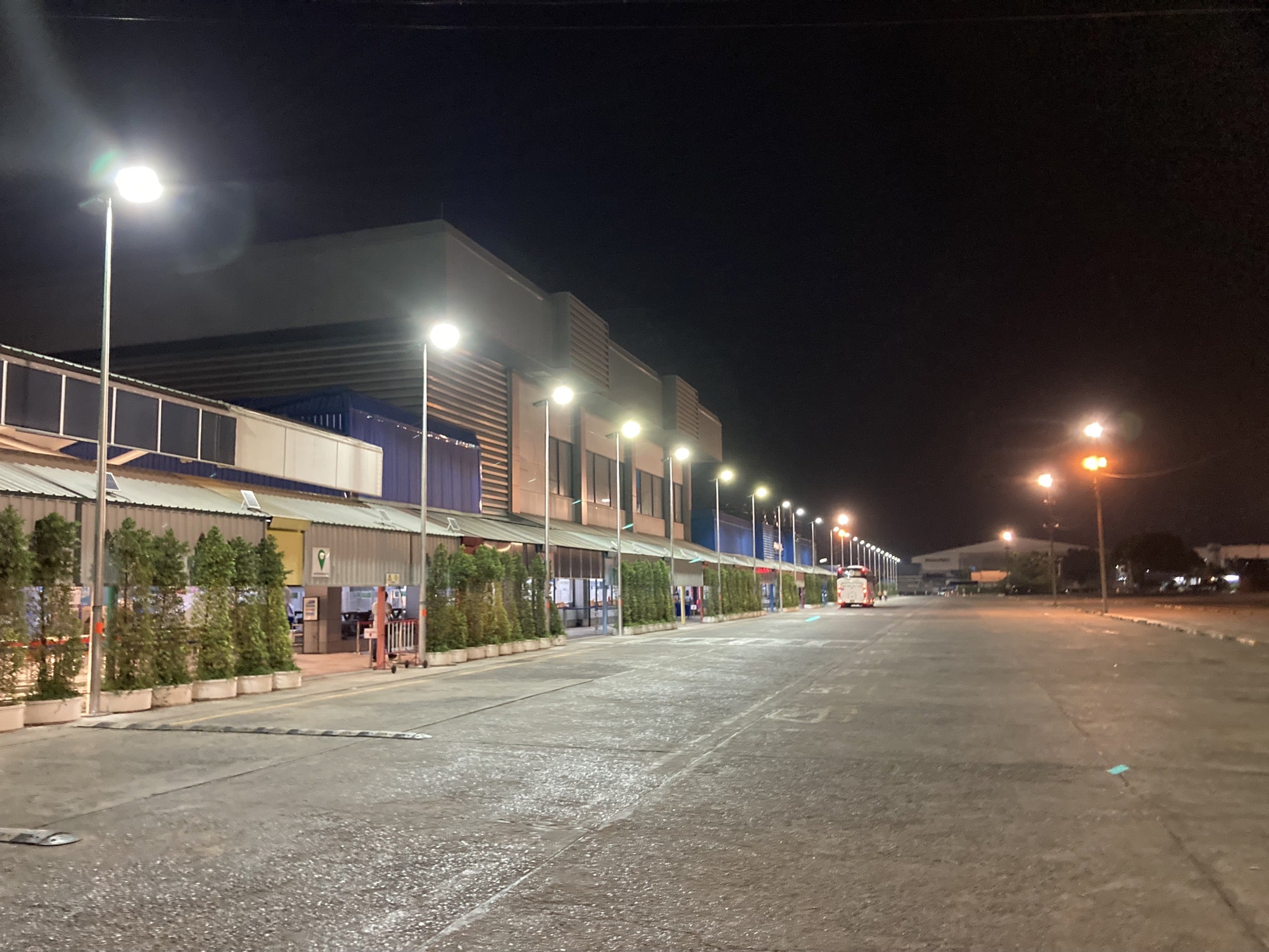
태양광 가로등의 평균 에너지 사용량
태양광 가로등의 총 전력 소비량을 계산하려면 LED 램프의 정격 전력과 작동 시간을 고려해야 합니다. 다음은 총 전력 소비를 계산하는 단계별 가이드입니다.
1단계: LED 램프의 정격 전력 결정태양광 가로등에 사용되는 LED 램프의 전력량은 제조사에서 제공하는 사양을 확인하세요. 예를 들어 LED 램프의 정격 전력이 40와트라고 가정해 보겠습니다.
2단계: 작동 시간 추정태양열 가로등이 매일 몇 시간 동안 작동하는지 결정하십시오. 이것은 위치, 계절 및 설치의 특정 요구 사항에 따라 달라질 수 있습니다. 대부분의 경우 태양광 가로등은 밤에 평균 10~12시간 동안 작동합니다. 이 예에서는 매일 밤 12시간 동안 태양광 가로등이 작동한다고 가정합니다.
3단계: 일일 전력 소비량 계산
LED 램프의 정격 전력(와트 단위)에 일일 작동 시간을 곱하십시오.
일일 소비 전력 = LED 램프의 정격 전력(와트) x 작동 시간(시간)
일일 전력 소비량 = 40와트 x 12시간 = 하루 480와트시(Wh)
4단계: 총 전력 소비량 계산특정 기간 동안의 총 전력 소비량을 찾으려면 일일 전력 소비량에 일수를 곱하십시오. 예를 들어 한 달(30일) 동안의 전력 소비량을 계산하려면 다음과 같이 하십시오.
총 소비전력량 = 일일 소비전력량(Wh) x 일수
총 전력 소비량 = 480Wh/일 x 30일 = 14,400와트시(Wh) 또는 14.4킬로와트시(kWh)
이 계산은 한 달 동안 태양광 가로등의 총 전력 소비량을 추정한 것입니다. 실제 전력 소비량은 기상 조건, 태양광 패널 효율성, 모션 센서 또는 적응형 조명 제어 장치의 존재 여부와 같은 요인으로 인해 달라질 수 있습니다.
다양한 유형의 태양광 가로등 및 전력 소비율의 예
태양광 가로등은 LED 램프의 전력량, 배터리 용량, 태양광 패널 크기와 같은 요인에 따라 다양한 디자인과 전력 소비율로 제공됩니다. 다음은 태양광 가로등의 다양한 유형과 전력 소비율에 대한 몇 가지 예입니다.
1. 주거용 태양광 가로등(5W – 20W)
이 태양 가로등은 주거 지역, 통로 또는 작은 공원을 위해 설계되었으며 일반적으로 5와트에서 20와트 사이의 전력 소비율을 갖습니다. 에너지를 절약하면서 충분한 조명을 제공합니다.
예: 전력 소비율이 15와트인 15W LED 태양광 가로등.
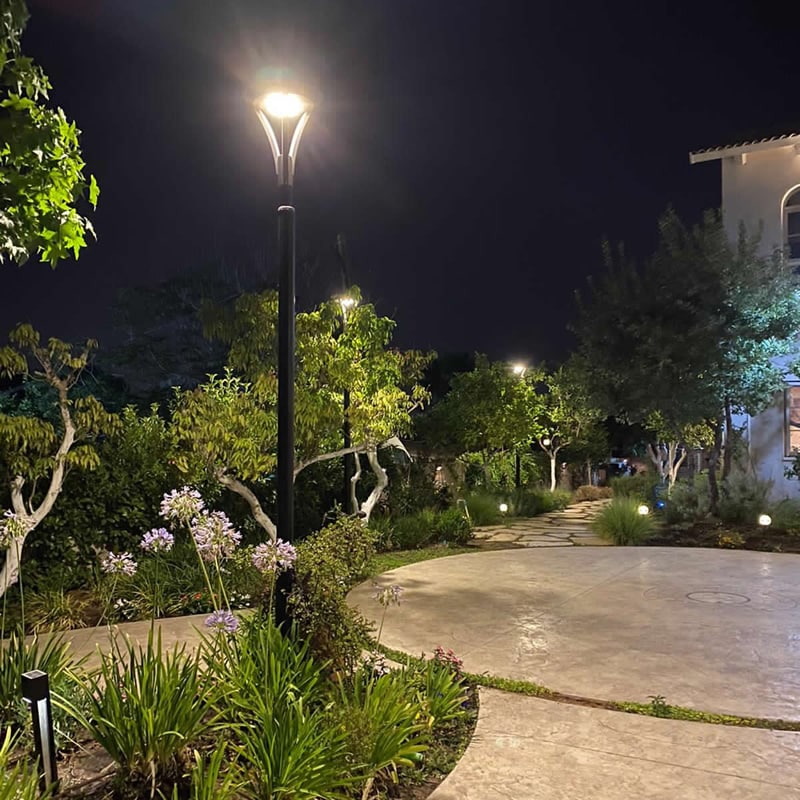
2. 상업용 태양광 가로등(20W – 60W)
상업용 태양광 가로등은 주차장, 주요 도로 및 공공 장소와 같은 더 넓은 지역에 적합합니다. 일반적으로 20와트에서 60와트 범위의 전력 소비율을 가지며 더 높은 밝기와 더 넓은 적용 범위를 제공합니다.
예: 전력 소비율이 40와트인 40W LED 태양광 가로등.

3. 고출력 태양광 가로등(60W~100W)
고출력 태양광 가로등은 고속도로, 대형 교차로 및 강력한 조명이 필요한 기타 교통량이 많은 지역을 위해 설계되었습니다. 이러한 조명은 일반적으로 60와트에서 100와트 사이의 전력 소비율을 가집니다.
예: 전력 소비율이 80와트인 80W LED 태양광 가로등.
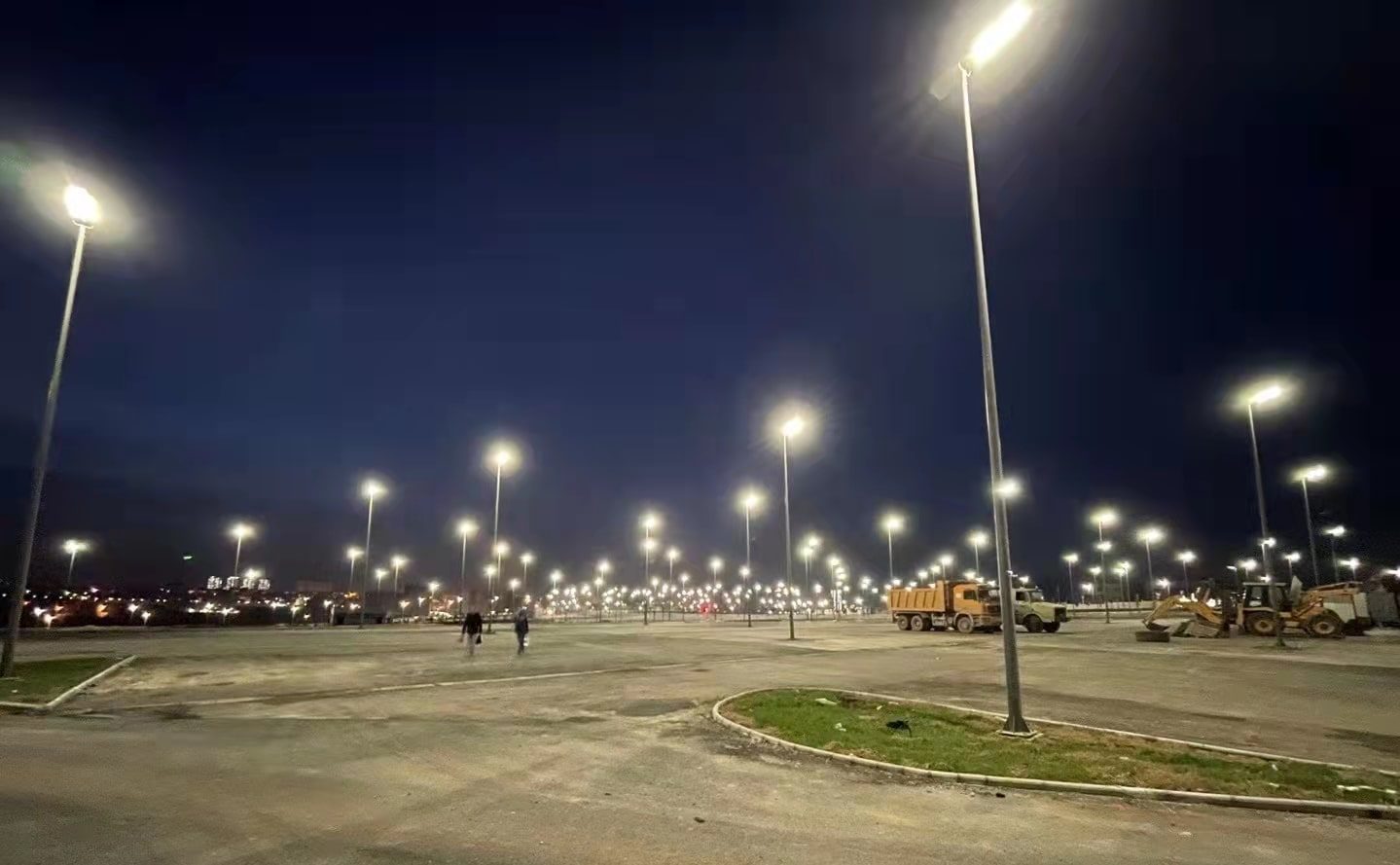
4. 모션 센서가 있는 태양광 가로등
이 태양광 가로등은 활동 수준에 따라 밝기를 조정하는 동작 센서를 갖추고 있어 에너지 효율적이고 다양한 응용 분야에 적합합니다. 소비전력은 LED 램프의 와트와 밝기 조절 정도에 따라 달라집니다.
예: 모션 센서가 있는 30W LED 태양광 가로등은 저휘도 모드에서 10W를 소비하고 모션이 감지되면 30W를 소비합니다.
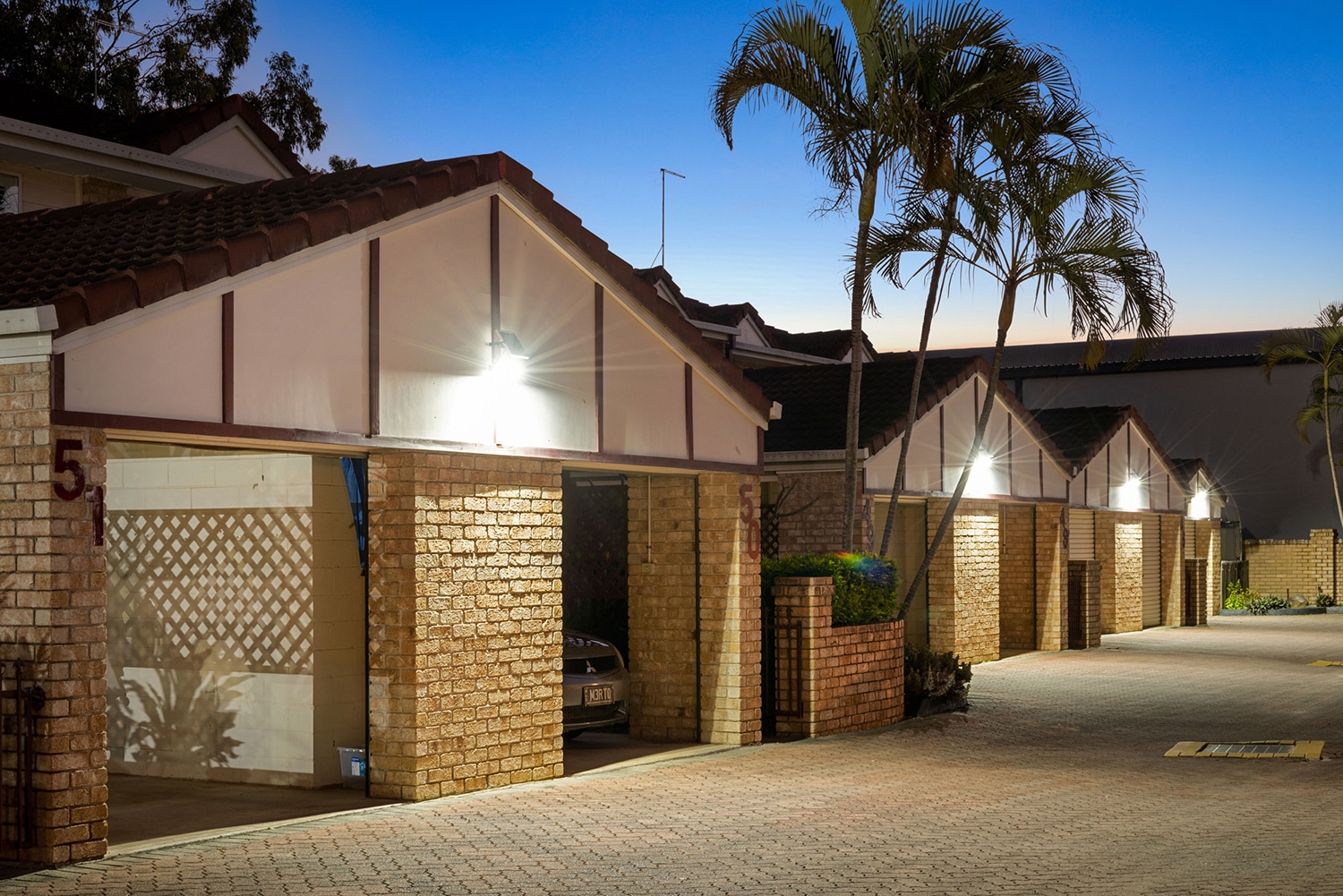
5. 일체형 태양광 가로등
일체형 태양광 가로등은 태양광 패널, LED 램프, 배터리 및 컨트롤러를 단일 장치로 통합하여 컴팩트하고 설치가 용이합니다. 소비전력은 LED 램프의 전력량과 내장 부품의 효율에 따라 달라집니다.
예: 전력 소비율이 25W인 25W 올인원 태양광 가로등.
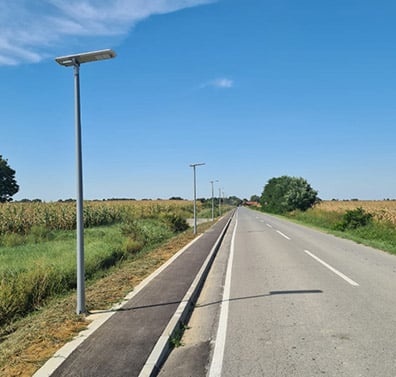
태양광 가로등의 낮은 전력 소비는 전통적인 가로등보다 에너지 효율적입니다. 또한 태양광 발전을 사용하면 탄소 배출량이 없기 때문에 환경 친화적이며 효율적인 조명을 제공하면서 탄소 발자국을 줄이는 데 이상적입니다. 전반적으로 태양광 가로등은 전통적인 가로등 시스템에 대한 훌륭한 대안이며 공공 장소 조명을 위한 지속 가능하고 비용 효율적인 솔루션을 제공합니다.
차례